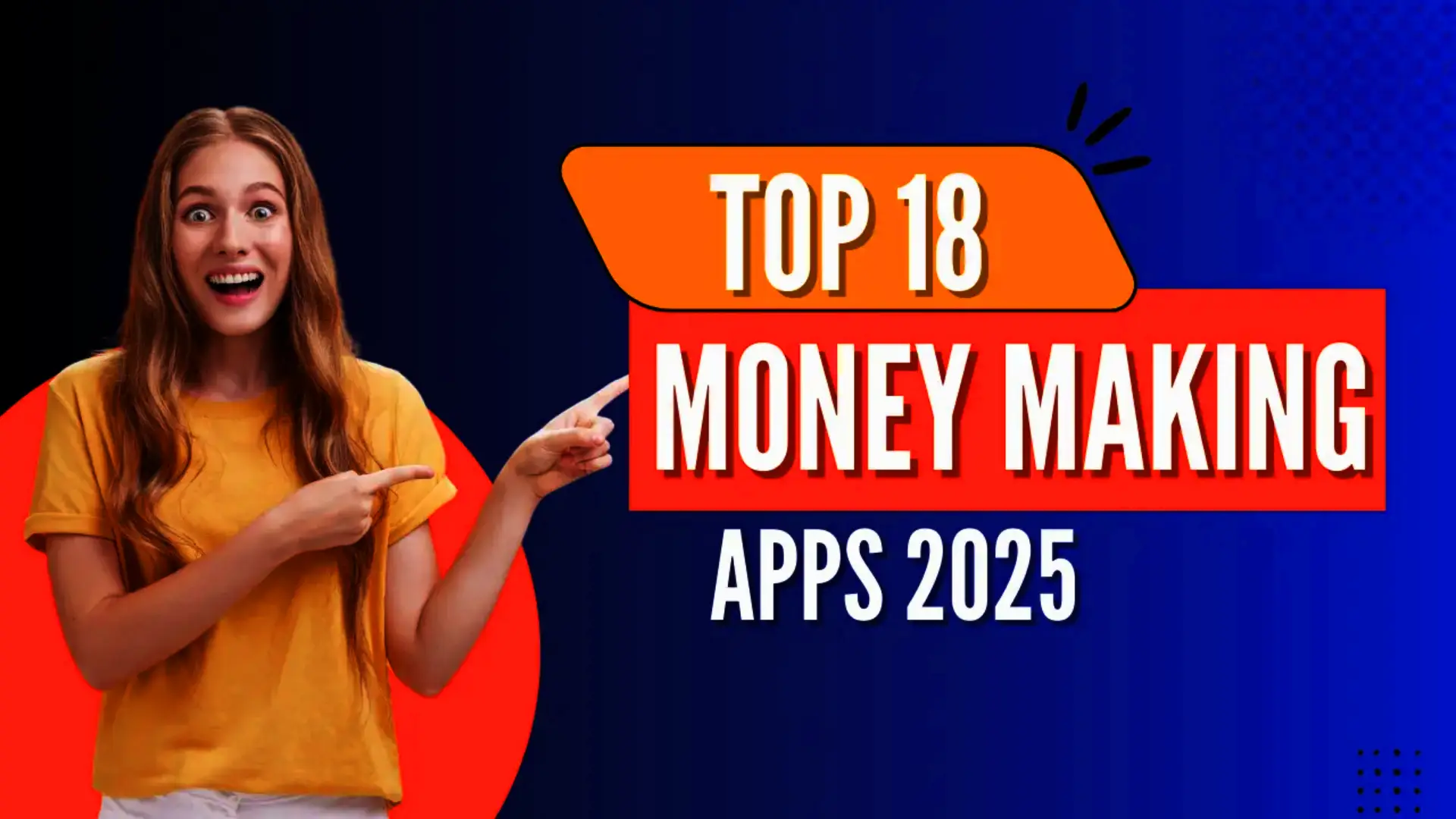How To Make Money as a Content Creator: A Comprehensive Guide for 2025
Creating content is one of the profitable rewarding career paths these days. Well, the numbers say that over 2 million professional content creators exist globally, and almost 1 billion hours of YouTube content are consumed by people in a single day. New creators often make their first dollar in about 6.5 months, and many can earn over $100,000 each year. Opportunities keep on rising.
Weird but true: you don’t need a huge following. Oftentimes, brands prefer a micro-influencer with any number of 10,000 to 50,000 followers over those whose audiences are too huge, they tend to enjoy more engaged followers.
Want to turn content creation into a money-making machine? Great! Let’s go deeper into exactly how the creators are making their money and help you build your very own $10,000 per month.
Understand How Big Content Creators Can Earn:
The creator economy is now a $104.2 billion industry, offering huge earning possibilities for all content creators.
Average earnings by content type:
Monetized creators make, on average, $51 per hour, and the median revenue for full-time creators is a revenue of $50,000 per year. Earning possibilities will vary on all platforms, from 50,000-75,000 followers charging $1,000-$3,000 per video on TikTok to an Instagrammer with the same number of followers charging anywhere from $2,000-$2,700 per reel.
Factors of influence in the creator earnings:

Creator earnings might be based on a variety of factors. In this report, we have put more focus on in-demand niches-for example, finance, technology, and health-where the rates will be higher. Besides this, content quality and usage rights play a great role in increasing revenues-for example, brands often pay more when they can reuse the content across various channels.
In the case of 69% of creators, brand partnerships act as the largest source of revenue generation.
Setting Real Income Expectations:
The road to profitability is really on very predictive timelines:
It takes 6.5 months for creators to make their first dollar and another 17 months to become self-sustaining. The most successful creators are still operating at least 5+ different ways of generating money for steady growth. All of these full-time creators, apart from one, make less than $50,000 annually. Really showing just how important proper planning and having a diverse revenue stream is.
Proven revenue factors that will help to build a regular income will include:
Almost 26% of creators say YouTube and TikTok are the most profitable platforms. Better engagement rates lead to better brand deals and monetizing opportunities. Posting consistently builds trust with your audience and gets you favored with the algorithm. 67% of creators sell products or merchandise as one of their content types.
Choosing Your Primary Revenue Stream:
Most of your monetization options depend upon the content creation trip. In fact, the most successful creators are those who have created sustainable income streams by having many ways of making money.
Evaluating monetization methods:
Brand partnership is the most profitable monetization. 69% call it the leading source of income. Small creators charge $100-$500 per sponsored post, while medium creators charge $500-$5,000 per collaboration.
Your monetization options include:
Ad Revenue:
YouTube pays $1-$5 per 1,000 views, blogs earn $5-$30 per 1,000 pageviews.
Affiliate Marketing:
You can get commission rates from 5 to 30% across platforms.
Digital Products:
Monthly earnings range from hundreds to thousands through courses and ebooks.
Memberships:
You get recurring revenue through platforms like Patreon and Substack.
How to Choose a Platform:
YouTube is the highest-earning platform, at 28.6% naming it their main source of income. YouTubers can expect to make an average of $0.02 per ad view. On TikTok, other ways of earning include creator rewards, integrating shops, and with brand collaborations.
Comparing Income Potential:

Simply put, the money you make from a platform can change a lot depending on the type of content you create and how much your audience interacts with it. YouTube works most for creators earning over 200,000 dollars yearly, while TikTok is on earnings for such creators below. About 52% of the monetized earn $51 or more per hour.
The choice of your main stream of revenue will depend on your content type, audience size, and long-term goals. Keep in mind that 91% of successful creators keep between 1 and 5 sources of revenue. That shows how much diversification with one primary source of revenue matters.
Building Your Content Creation Framework:
A good content creation framework will scale your earnings to $10,000 per month. This framework is built with the right mix of tools, systems, and productivity strategies.
Must-have Tools and Resources:
Today, content creation is supported by an army of specialized tools. AI platforms like ChatGPT and Claude amplify your productivity and even help you brainstorm from the very beginning. Text-to-image tools like Midjourney enable the creation of images from highly detailed prompts.
Your must-have toolkit should include:
Creation:
Canva for design, Adobe Premiere Pro for video editing, Grammarly for writing
Audio:
Audacity to record, ElevenLabs for AI Voice
Management Platforms:
WordPress for websites, Buffer for social scheduling
Content planning systems:
Good content planning begins with a structured workflow. Tools like Notion or Airtable help organize your content calendar and track progress effectively. These platforms make team collaboration smooth and streamline the content creation process.
A good content workflow strategizes each and every step right from the idea down to publication. Using ClickUp or Asana lets you keep complete track of tasks by owner or deadlines. By following this approach, this will definitely assure continuous delivery of top quality content.
Productivity Optimization:
Your most productive hours can significantly make a difference in your output. Matching important tasks with peak productivity hours yields the best results for content makers. This approach helps in handling the many tasks that go hand in hand with content creation, from brainstorming to audience engagement.
Batch content creation is one of the most key productivity strategies. Multiple pieces of content need to be created in really focused time blocks. Perhaps days filming and then other days writing or editing. That really works for creators who manage a number of channels or types of content.
Project management tools will track your progress, automate routine tasks, and thereby increase efficiency. Systems like these cut bottlenecks and make collaboration easier. Your content framework will support steady growth toward your income goals.
Implementation of Multiple Streams of Income:
Diversification of income streams remains one of the important strategies sought by content creators to build up sustainable earnings. That much can be understood from the fact that 44% of content creators say their creator business is a primary source of income for their family.
Setting up the primary source of revenue:
Brand collaborations are the lifeblood of creator income. Sponsored content makes creators $300-$500 per post if one has an engaged audience. Having a complete media kit that outlines your audience demographics and engagement metrics will set up your primary revenue stream. In fact, yes, it is true that creators who track performance in detail secure higher-value partnerships.
Secondary monetization methods:
Having identified the primary source of income, the next thing in your roadmap should be diversification into other streams of complementary income.
Digital products leverage tremendous opportunities:

Online courses make an average of $187 each. Membership sites bring in money every month. Digital downloads like templates and presets are popular. Consulting services can earn between $30 and $250 per hour.
Then, other great affiliate marketing opportunities pay these intermediates a fortune of about $3,000 daily. Under subscription-based models like Patreon, they could also create repetitive monthly revenues coming from super followers.
Combining revenue streams:
Success of multiple streams of revenue requires mutually beneficial alliances and systematic implementation. Numbers say that 91% of successful creators keep up to 1-5 streams running simultaneously. Identify the monetization methods that complement your content strategy and audience priorities-the fastest way to get started.
After all, revenue integration pays off the most when you create synergies between the different streams of income. For example, think about how you could use your email list to sell affiliate products, digital offerings, and sponsored content in unison. Creators who can effectively combine more than one stream on average earn 20% more than those operating on a single source.
The analytics tools will monitor performance metrics for each of these sources of income and afford opportunities for optimization. A diversified portfolio creates stabilized income streams while maximizing one’s earning capacity. Remember, flooding your content with monetizing strategies can chase your audience away, try to find a balance in providing value and earning revenues.
Scaling to $10K Per Month:
Precise metrics tracking and revenue stream optimization set the base to scale creation to $10,000 a month. We tracked data-driven decisions that helped creators achieve steady growth.
Growth metrics tracking:
Content creators should track key performance indicators that show scaling. Note that it is only by tracking the growth of one’s audience, as well as the participation rate, that one gets to understand how effective his or her content is. A comprehensive tracking system will have the following:
Watch time and viewer retention rate
Click-through rates on calls-to-action
Social media shares and brand mentions
Email marketing open rates
Product and service conversion rates
All these metrics, together with analytics tools, allow one to spot trends and optimization opportunities. Creators that use data as a basis in making decisions when it comes to content experience growth in audience engagement 20 percent more than other creators.
Methods for growing the audience:
Loyal followers are built through strategic planning and consistent execution. Repurposing of content emerges as another powerful tactic that develops a single piece of content into multiple formats on different channels. When creators adapt content across channels, they save resources while maximizing reach.
Platform-specific growth strategies include Pinterest traffic systems, podcast pitching, and creating better outcomes.
Flexible Templates for Content:
Top-shelf output is ensured with the flexible templates for content, with fewer review cycles.
Strategy for Revenue Optimization:

A sophisticated approach to pricing and revenue management scales to $10,000 a month. Successful creators use dynamic pricing strategies based on market conditions and target audience segments. The global revenue management market will reach $22 billion by 2025, showing how important optimization is.
Value-based pricing models work best when the expertise of the creators and demand increase. Creators with systematic revenue optimization witness a conversion rate six times higher than those without well-laid-out strategies.
Team arrangement and integrated marketing approaches break the traditional silos to promote better communication and improved results. By strategic planning and execution, creators can establish multiple revenue streams while maintaining quality content and audience participation.
Conclusion:
Content creation is a well-worn path to financial freedom, with clear routes to upwards of $10,000 per month in earnings. Success will depend on choosing the right mix of platforms, revenue streams, and growth tactics that play to your strengths and audience priorities.
You are better off getting great at a single source of revenue through brand partnerships, digital products, or monetizing the platforms. You will have to make simplified processes with the right tools and frameworks that help in maintaining high-quality content continually.
Successful creators understand how to drive value while scaling their streams effectively. Data shows that creators operating multiple streams yield 20% more than a single stream of income.
Of course, hitting $10,000 a month takes great patience, strategic planning, and constant finetuning. You will be monitoring your metrics, growing an audience thoughtfully, and refining your revenue strategy based on performance data.
The creator economy is continuously expanding, and there are so many opportunities that could come to fruition-if only the interested person acted. Begin today by choosing one key platform and applying one monetization method. It’s just that in doing so, momentum builds with regard to income goals, coupled with much stronger engagement with one’s audience.
FAQs:
Is content creation a viable career path in 2025?
Yes, content creation is a good career path in 2025. There are many opportunities for success. The demand for engaging content is growing. Creators who adapt quickly can thrive.
How long does it take to start earning as a content creator?
A beginner normally takes about 6.5 months to make his first dollar as a content creator. This again depends on the niche, the quality of content, and how strategically one pulls in marketing.
What are the top ways that creators make money from the content they provide?
Very effective ways are brand partnerships, ad revenue, affiliate marketing, digital products, and membership. Among those, brand partnerships pay a lot-69% of creators said it’s been their major source of income.
Which platforms give the best earnings to content creators?
YouTube always comes out top of the earning chart, but only for creators who earn more than $200,000 in the year. TikTok currently tops the chart for those earning less than this. However, the best platform is based on your content type and target audience.
How do creators scale earnings up to $10,000 per month?
Earnings to be scaled up to $10,000 monthly will involve diversification of income streams and optimization of the methods of revenues. This shall involve multiple methods of monetizing content, growth metrics to monitor improvement, and constantly improving quality and engagement metrics.



